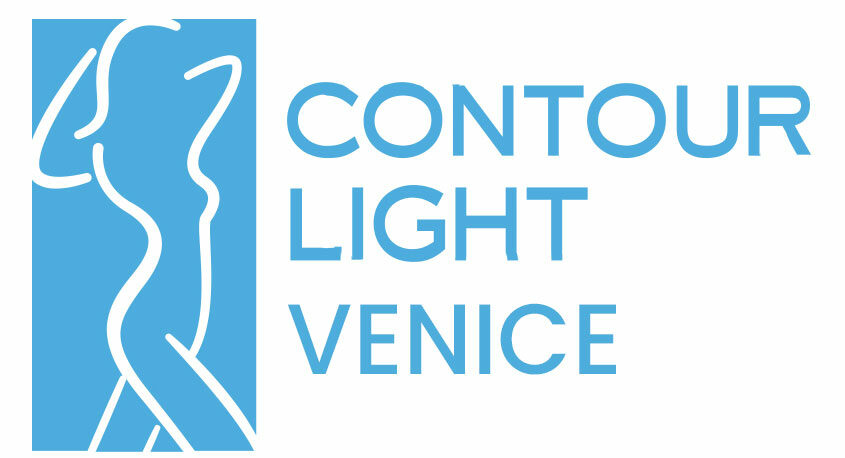What is Body Contouring and How Can It Help You Achieve Your Desired Figure?
 Body contouring is an increasingly popular procedure among men and women alike who are looking to reshape and sculpt their bodies. It is a minimally invasive procedure that can help to create a more aesthetically pleasing figure or silhouette, while also improving the overall health and wellness of the individual. Body contouring can be used to target a variety of areas throughout the body, such as the stomach, arms, legs, and buttocks, and can help to remove excess fat and skin in order to create a more toned and proportionate look. It can be used to address a variety of issues, including loose skin, stubborn pockets of fat, and uneven contours. With the help of body contouring, it is possible to achieve a desired figure and improved self-confidence.
Body contouring is an increasingly popular procedure among men and women alike who are looking to reshape and sculpt their bodies. It is a minimally invasive procedure that can help to create a more aesthetically pleasing figure or silhouette, while also improving the overall health and wellness of the individual. Body contouring can be used to target a variety of areas throughout the body, such as the stomach, arms, legs, and buttocks, and can help to remove excess fat and skin in order to create a more toned and proportionate look. It can be used to address a variety of issues, including loose skin, stubborn pockets of fat, and uneven contours. With the help of body contouring, it is possible to achieve a desired figure and improved self-confidence.
What areas of the body can be contoured?
Contouring is usually performed on the abdomen, buttocks, thighs, knees, and calves. It can also be used to improve areas like the arms, hips, and back. The best results can be achieved when the contouring procedure is tailored to each individual’s specific concerns. Since contouring techniques can vary based on the type of procedure that is used, they can be used to address a variety of issues. Contouring can be used to help sculpt and slim a figure, as well as create more balanced proportions. It can be used to help with stubborn pockets of fat in specific areas, such as the abdomen, thighs, and back of the arms, as well as reduce the appearance of cellulite.
Benefits of body contouring
– Body contouring can help to create more balanced proportions, as well as a more toned, sculpted look. Contouring can help to slim and define areas like the stomach, hips, thighs, knees, and buttocks, as well as create more lift and volume in the breasts, helping to achieve a more youthful silhouette. This procedure can help to take away excess fat and skin in problem areas, such as the abdomen, thighs, knees, and calves, as well as reduce the appearance of cellulite. – Body contouring can help to improve the overall health and wellness of the individual. It can help to boost confidence by helping people feel more comfortable and confident in their own skin. – Body contouring can help to reduce the risk of certain diseases and conditions, such as diabetes and heart disease. It can also help to prevent saggy skin and the appearance of wrinkles and fine lines.
Types of body contouring procedures
– Body contouring can be performed using a variety of different procedures. Each procedure is tailored to the needs and concerns of the individual, and there are a variety of options available, including: – Ultrasound Cavitation – This procedure is used to reduce the appearance of stubborn fat in the abdomen and thighs by breaking down the fat cells with sound vibrations. – Cryolipolysis – This procedure is used to reduce the appearance of stubborn fat in the abdomen and thighs by freezing the fat cells and causing them to die off. – Laser Lipo – This procedure is used to break down the fat cells in the abdomen and thighs by using a laser-guided vacuum. – Vaser High-Intensity Focused Ultrasound (HIFU) – This procedure is used to break down the fat cells in the abdomen and thighs by using ultrasound energy.
Potential risks and side effects
As with any medical procedure, there are potential risks associated with body contouring and complications may occur. Although the side effects vary based on the type of procedure used, common side effects include bruising, swelling, soreness, redness, and pain, as well as infections, blood clots, and allergic reactions. While most people who undergo body contouring experience minimal side effects, it is important to keep in mind that everyone heals and responds to procedures differently. It is important to consult with a qualified medical professional who can assess your specific needs and risks, as well as recommend a suitable treatment plan that is tailored to your individual needs.
Who is a good candidate for body contouring?
Anyone who is looking to reshape and sculpt their body and improve their overall health and wellness is a good candidate for body contouring. However, it is important to keep in mind that results vary based on the individual and each person’s unique body type and genetics. It is also important to note that not all individuals are suitable for every type of procedure. In order to find out if body contouring is right for you, it is important to consult with a qualified medical professional who can assess your specific needs and concerns, as well as recommend a suitable treatment plan that is tailored to your individual needs.
Cost of body contouring
The cost of body contouring will vary based on the type of procedure used, the number of sessions required, and the area being treated. Costs can also vary depending on the type of medical facility in which the procedure is performed, as well as the practitioner’s level of expertise. For the most part, though, the cost of body contouring is relatively affordable, especially when compared to other cosmetic procedures like tummy tuck, butt lift, and liposuction. While the cost of body contouring varies based on the individual and procedure used, it is important to keep in mind that not everyone is eligible for medical insurance. It is also important to keep in mind that not all procedures are covered by insurance, and, if they are, the level of coverage may vary, depending on the individual’s insurance provider. For the most part, though, the cost of body contouring is relatively affordable, especially when compared to other cosmetic procedures like tummy tuck, butt lift, and liposuction.
Recovery and results
The recovery time and results of body contouring vary based on the type of procedure that is used, as well as the individual. In general, though, most people can return to work two to three days after a body contouring procedure. It is important to follow the post-procedure instructions outlined by the practitioner, as well as to apply the prescribed aftercare products, in order to achieve optimal results. While the results of body contouring vary based on the individual and procedure used, most people who undergo this procedure can expect to see noticeable results. It is important to keep in mind, though, that results are not permanent, and that the body will continue to change over time. This means that it is important to maintain a healthy diet and exercise routine, follow the aftercare instructions, and maintain regular follow-up appointments with the practitioner in order to maintain optimal results.
What to expect during and after treatment
Before the procedure is performed, the practitioner will conduct a thorough consultation to discuss your specific needs and concerns, as well as recommend a suitable treatment plan. It is important to discuss any medications that you are taking, as well as any health conditions that you may be dealing with, as this information could impact the type of procedure that is recommended for you. Before the procedure is performed, you will be asked to sign a consent form that outlines the risks and complications that could arise from the procedure. The practitioner will also provide you with instructions regarding what you should do before, during, and after the procedure, as well as aftercare instructions. You will likely experience mild swelling and bruising following the procedure, and you will most likely be recommended to wear loose-fitting clothing for a few days after the procedure. It is important to follow the aftercare instructions, as well as to adhere to a healthy diet and exercise routine, in order to achieve optimal results. You will likely be required to return for a follow-up appointment to discuss your experience and progress, as well as receive aftercare instructions.
Finding a qualified body contouring specialist
It is important to find a qualified and experienced body contouring specialist who is able to assess your specific needs and concerns, as well as recommend a suitable treatment plan. It is important to keep in mind that not all practitioners are qualified to perform body contouring, and that not all procedures are FDA-approved for body contouring. To find a qualified and experienced specialist, you can: – Ask your general practitioner if they recommend any specialists or medical facilities that offer body contouring. – Research and visit different medical facilities and practitioners to find one that is right for you. – Check the qualifications of each practitioner to make sure they are qualified to perform the procedure. Once you’ve found a specialist, it is important to schedule a consultation to discuss your specific needs and concerns, as well as recommend a suitable treatment plan. It is important to keep in
